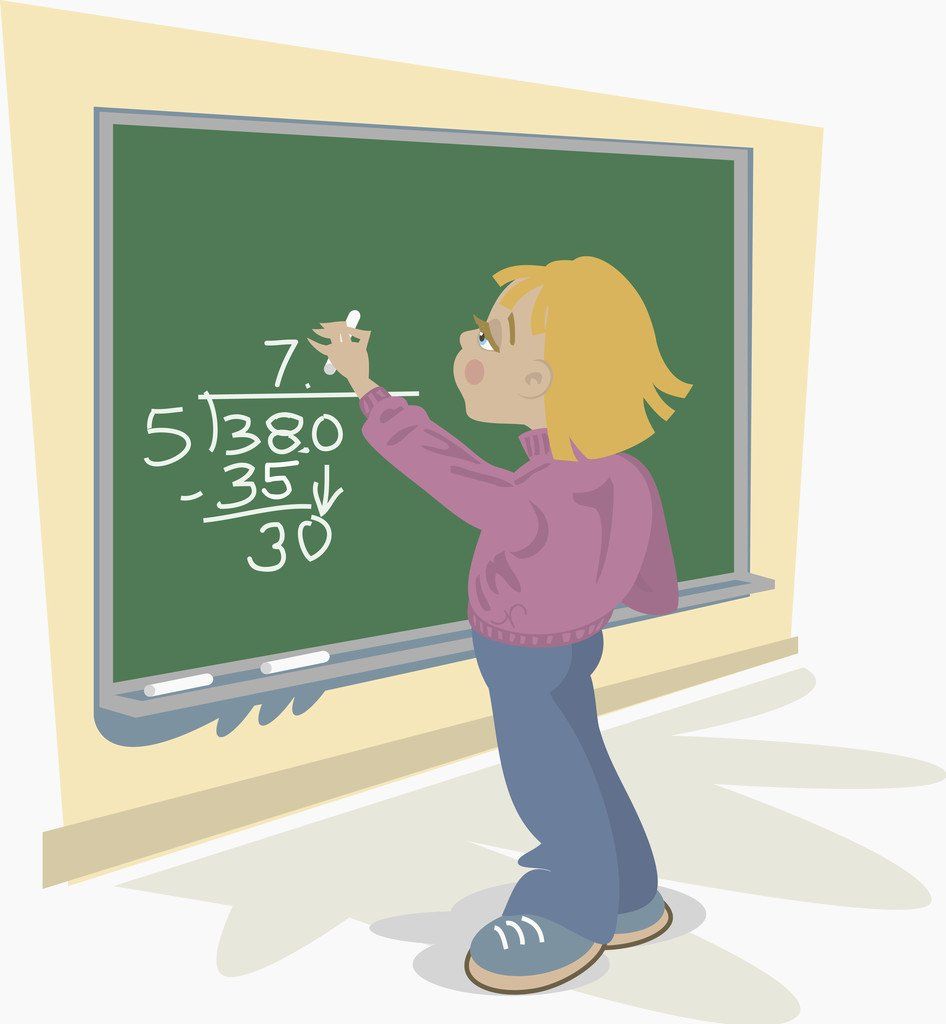HOw's the class flow?
- Teachers and students meet online from Monday to Thursday for an hour.
- Initial assessment is given to evaluate student's level of knowledge.
- Teacher fine tunes curriculum according to assessment results.
- Classes are participatory. Teachers cover concepts and students will practice through interactive simulations, adaptive exercises, or exploring activities before, during, and after class.
- Teachers adjust their classes based on the results of daily practice and intervene directly with students who need help.
- Weekly assessments are given to be completed every Friday.
"practice, practice, practice"
Curriculums
6th Grade Math
1. Ratios, Rates, and Percentages
1.1 Introducing Ratios
1.2 Equivalent Ratios & Tape Diagrams
1.3 Rates
1.4 Unit Rates
1.5 Unit Conversion
1.6 Introducing Percentages
2. Operations with Fractions, Decimals, and Whole Numbers
2.1 Division as Multiplication
2.2 Scaling Shrinking Rectangle
2.3 Adding and Subtracting Decimals with the Standard Method
2.4 Multiplying Decimals with the Standard Method
2.5 Decimals Divided by Decimals
2.6 Using Greatest Common Factor
2.7 Using Least Common Multiple
3. Introduction to Graphing and Algebra Expressions
3.1 Points on the Number Line
3.2 Points on the Coordinate Plane
3.3 Expressions
3.4 Using Exponents
3.5 Order of Operations
3.6 Letters Stand for Numbers
4. Equations and Inequalities
4.1 Equivalent Expressions
4.2 Solving Equations
4.3 Equivalent Ratio Equations
4.4 Writing Equations
4.5 Making Tables and Graphs
4.6 Comparing Rational Numbers on a Number Line
4.7 Inequalities on the Number Line
4.8 Inequality Solutions
5. Surface Area and Volume
5.1 Area of Quadrilaterals
5.2 Area of Triangles
5.3 Shapes in the Coordinate Plane
5.4 Surface Area
5.5 Volume of Prisms
6. Statistics
6.1 Dot Plots
6.2 Histograms
6.3 Mean, Median, Mode and Range
7th Grade Math
1. Ratios, Proportional Relationships, and Rational Numbers
1.1 Unit Rate and Proportionality
1.2 Using Equations to Represent Proportional Relationships
1.3 Proportionality in Geometry: Scale Drawings
1.4 Modeling the Addition of Integers
1.5 Multiplying Rational Numbers
1.6 Converting Between Fractions and Decimals
2. Expressions, Equations, and Inequalities
2.1 Combining Like Terms
2.2 Identifying Equivalent Expressions
2.3 Writing Two-Step Equations
2.4 Solving Two-Step Equations
3. Percents and Scale
3.1 Understanding Percent
3.2 Problem-Solving with Percents
3.3 Solving Problems Involving Percent Increase and Decrease
3.4 Solving Problems Involving Taxes, Commissions, and Fees
3.5 Scale Drawings and Percent
4. Angles, Area, and Volume
4.1 Special Angle Pairs
4.2 Area and Circumference of Circles from Radius and Diameter
4.3 Solving Problems Involving Circles
4.4 Surface Area of Triangular Prisms
4.5 Volume of Cubes and Rectangular Prisms
4.6 Volume of Triangular Prisms
5. Probability and Statistics
5.1 Understanding Likelihood
5.2 Theoretical Probability Models
5.3 Tree Diagrams for Simple Events
5.4 Visually Comparing Two Data Distributions
5.5 Introduction to Sampling
5.6 Using Sample Data to Make Estimates about Populations
8th Grade Math
1. Congruence and Similarity
1.1 Introduction to Rigid Motions
1.2 Defining Congruence
1.3 Translations on the Coordinate Plane
1.4 Angles and Parallel Lines
1.5 Angles & Triangles
1.6 Properties of Dilations
1.7 Defining Similarity
2. Linear Equations and Linear Relationships
2.1 Writing Equations with Variables
2.2 Linear Equations With Variables on Both Sides
2.3 Graphing Proportional Relationships
2.4 Defining Slope
3. Systems of Equations
3.1 Understanding Systems of Linear Equations
3.2 Solving Systems of Equations by Graphing
3.3 Solving Systems of Equations Using Substitution
3.4 Solving Systems of Equations Using Elimination
4. Patterns and Associations in Data
4.1 Representing Data in Scatter Plots
4.2 Linear Patterns in Scatter Plots
4.3 Fitting a Line to Data
5. Functions
5.1 Introduction to Functions
5.2 Domain and Range
5.3 Interpreting Graphs of Functions
5.4 Different Representations of Functions
6. Volume
6.1 Volume of Cylinders
6.2 Volume of Cones
6.3 Volume of Spheres
7. Integer Exponents and Scientific Notation
7.1 The Power of 0 and Negative Exponents
7.2 Comparing Numbers in Scientific Notation & Choosing Reasonable Units
8. Irrational Numbers and the Pythagorean Theorem
8.1 Understanding Perfect Squares and Perfect Cubes
8.2 Introduction to Square Roots and Cube Roots
8.3 Introduction to Irrational Numbers
8.4 Introduction to The Pythagorean Theorem
8.5 Proofs of the Pythagorean Theorem
Algebra 1 Essentials
1. Introduction to Functions
1.1 Linear Functions
1.2 Representing Linear Functions
1.3 Rate of Change
1.4 Introduction to Quadratic Models
1.5 Comparing Function Types
2. Expressions
2.1 Number Types
2.2 Exponential Expressions
2.3 Distribution and Factoring
3. Functions
3.1 Defining Functions
3.2 Graphs of Functions and Non-Functions
3.3 Domain and Range
3.4 Compound Interest
3.5 The Quadratic Model
3.6 Comparing Linear, Quadratic, and Exponential Models
4. Equations and Inequalities
4.1 Absolute Value Equations
4.2 Systems of Linear Equations
4.3 Graphing Linear Inequalities
4.4 Quadratics with Constant Terms
4.5 Solving by Factoring
4.6 Exponential Functions and Equations
5. Data, Statistics, and Probability
5.1 Histograms and Frequency Distributions
5.2 Mean and Standard Deviation
5.3 Sampling and the Normal Distribution
5.4 Correlation and Causation
Algebra 2 Essentials
1. Polynomials
1.1 Properties of Polynomials
1.2 Multiplying Polynomials
1.3 Dividing Polynomials
2. Functions
2.1 Functions
2.2 Function Transformations
2.3 Piecewise Defined Functions
2.4 Graphing Functions
2.5 Inverse Functions
3. Quadratic Functions
3.1 Roots of Quadratic Functions
3.2 Quadratic Inequalities
3.3 Modeling with Quadratic Functions
3.4 Rational and Irrational Roots
3.5 Complex Numbers
4. Polynomial Functions
4.1 Factoring Polynomials Using Quadratic Methods
4.2 Factoring Higher Degree Polynomials
4.3 Graphing Polynomial Functions
4.4 Roots of Polynomial Equations
5. Exponents & Logarithmic Functions
5.1 Exponential Growth & Decay Functions
5.2 Logarithms
5.3 Logarithmic Functions
5.4 Transformations of Log Functions
Interactive Geometry Essentials
1. The Three Dimensions
1.2 Angles - Definition, Types, Interactives and Examples
1.3 Triangles - Definition, Classification, Interactives and Examples
1.4 Circles - Definition, Formulae, Interactives and Examples
1.5 Volume of Solids - Definition, Formulae, Interactives and Examples
1.6 Cross Sections of Solids
2. Rigid Transformations
2.1 Transformations in the Plane
2.2 Translations
2.3 Reflections
2.4 Rotations
2.5 Composite Transformations
3. Congruence
3.1 Definition of Congruence
3.2 ASA and AAS Triangle Congruence
3.3 Applications of Congruent Triangles
4. Reasoning and Proof
4.1 Theorems and Proofs
4.2 Theorems about Lines and Angles
4.3 Theorems about Concurrence in Triangles
4.4 Applications of Triangle Theorems
5. Similarity
5.1 Definition of Similarity
5.2 Theorems Involving Similarity
5.3 Applications of Similar Triangles
6. Trigonometry
6.1 Tangent Ratio
6.2 Sine and Cosine Ratios
6.3 Triangles in Applied Problems
7. Circles
7.1 Circles and Similarity
7.2 Circumference of a Circle and Area of a Circle - Formula, Interactives and Examples
7.3 Sector Area
8. Three Dimensions
8.1 Cylinders
8.2 Spheres
8.3 Connections Between Two and Three Dimensions
8.4 Modeling in Three Dimensions
9. Conics and Coordinate Geometry
9.1 Slope of Parallel and Perpendicular Lines
9.2 The Distance Formula
9.3 Points that Partition Line Segments
9.4 Conic Sections
Trigonometry Concepts
1. Introduction to Trigonometry
1.1 Lengths of Triangle Sides Using the Pythagorean Theorem
1.2 Identifying Sets of Pythagorean Triples
1.3 Pythagorean Theorem to Classify Triangles
1.4 Pythagorean Theorem to Determine Distance
1.5 Lengths of Sides in Isosceles Right Triangles
1.6 Relationships of Sides in 30-60-90 Right Triangles
1.7 Special Triangle Ratios
1.8 Sine, Cosine, and Tangent Functions
1.9 Secant, Cosecant, and Cotangent Functions
1.10 Pythagorean Theorem for Solving Right Triangles
1.11 Inverse Trigonometric Functions
1.12 Alternate Formula for the Area of a Triangle
1.13 Angles of Elevation and Depression
1.14 Right Triangles, Bearings, and other Applications
1.15 Angles of Rotation in Standard Positions
1.16 Coterminal Angles
1.17 Trigonometric Functions and Angles of Rotation
1.18 Reference Angles and Angles in the Unit Circle
1.19 Trigonometric Functions of Negative Angles
1.20 Trigonometric Functions of Angles Greater than 360 Degrees
1.21 Reciprocal Identities
1.22 Domain, Range, and Signs of Trigonometric Functions
1.23 Quotient Identities
1.24 Cofunction Identities and Reflection
1.25 Pythagorean Identities
2. Graphs of Trigonometric Functions
2.1 Radian Measure
2.2 Conversion between Degrees and Radians
2.3 Six Trigonometric Functions and Radians
2.4 Rotations in Radians
2.5 Length of an Arc
2.6 Area of a Sector
2.7 Length of a Chord
2.8 Angular Velocity
2.9 Sine and Cosecant Graphs
2.10 Cosine and Secant Graphs
2.11 Tangent and Cotangent Graphs
2.12 Vertical Translations
2.13 Horizontal Translations or Phase Shifts
2.14 Amplitude
2.15 Period and Frequency
2.16 Amplitude, Period, and Frequency
2.17 Trigonometric Identities and Equations
3. Trigonometric Identities
3.1 Even and Odd Identities
3.2 Proofs of Trigonometric Identities
3.3 Simpler Form of Trigonometric Equations
3.4 Trigonometric Equations Using Factoring
3.5 Trigonometric Equations Using the Quadratic Formula
3.6 Cosine Sum and Difference Formulas
3.7 Sine Sum and Difference Formulas
3.8 Tangent Sum and Difference Formulas
3.9 Applications of Sum and Difference Formulas
3.10 Double Angle Identities
3.11 Half Angle Formulas
3.12 Trigonometric Equations Using Half Angle Formulas
3.13 Sum to Product Formulas for Sine and Cosine
3.14 Product to Sum Formulas for Sine and Cosine
3.15 Triple-Angle Formulas and Linear Combinations
4. Inverse Trigonometric Functions
4.1 Definition of the Inverse of Trigonometric Ratios
4.2 Exact Values for Inverse Sine, Cosine, and Tangent
4.3 Inverse of Functions through Algebraic Manipulation
4.4 Inverses by Mapping
4.5 Inverses of Trigonometric Functions
4.6 Composition of Trig Functions and Their Inverses
4.7 Definition of Inverse Reciprocal Trig Functions
4.8 Composition of Inverse Reciprocal Trig Functions
4.9 Trigonometry in Terms of Algebra
4.10 Applications of Inverse Trigonometric Functions
5. Triangles and Vectors
5.1 Sides of an Oblique Triangle
5.2 Determination of Unknown Angles Using Law of Cosines
5.3 Identify Accurate Drawings of Triangles
5.4 Derivation of the Triangle Area Formula
5.5 Heron's Formula
5.6 Determination of Unknown Triangle Measures Given Area
5.7 Angle-Angle-Side Triangles
5.8 Angle-Side-Angle Triangles
5.9 Possible Triangles with Side-Side-Angle
5.10 Law of Sines
5.11 Law of Cosines
5.12 General Solutions of Triangles
5.13 Directed Line Segments
5.14 Vector Addition
5.15 Vector Subtraction
5.16 Resultant of Two Displacements
5.17 Vector Multiplied by a Scalar
5.18 Translation of Vectors and Slope
5.19 Unit Vectors and Components
5.20 Resultant as the Sum of Two Components
5.21 Resultant as Magnitude and Direction
6. Polar System
6.1 Plots of Polar Coordinates
6.2 Distance Between Two Polar Coordinates
6.3 Transformations of Polar Graphs
6.4 Polar to Rectangular Conversions
6.5 Rectangular to Polar Conversions
6.6 Rectangular to Polar Form for Equations
6.7 Intersections of Polar Curves
6.8 Equivalent Polar Curves
6.9 Trigonometric Form of Complex Numbers
6.10 Product Theorem
6.11 Quotient Theorem
6.12 DeMoivre's Theorem
6.13 DeMoivre's Theorem and nth Roots
6.14 Equations Using DeMoivre's Theorem
6.15 Geometry of Complex Roots
Chemistry Essentials
1. Matter and Change
1.1 Matter, Mass, and Volume
1.2 Pure Substance
1.3 Physical Properties
1.4 Physical Change
1.5 Change of State
1.6 States of Matter
1.7 Mixture
1.8 Element
1.9 Compound
1.10 Chemical Change
1.11 Chemical Symbols and Formulas
1.12 Chemical Properties and Chemical Reactions
1.13 Reactants and Products
1.14 Recognizing Chemical Reactions
2. Measurements
2.1 SI Base Units
2.2 Metric Prefixes
2.3 Scientific Notation
2.4 Temperature and Temperature Scales
2.5 Dimensional Analysis
2.6 Density
2.7 Significant Figures
3. Atomic Structure
3.1 Law of Conservation of Mass
3.2 Dalton's Atomic Theory
3.3 Atom
3.4 Electron
3.5 Proton
3.6 Neutron
3.7 Atomic Nucleus
3.8 Atomic Number
3.9 Mass Number
3.10 Isotope
3.11 Atomic Mass Unit
3.12 Calculating Average Atomic Mass
4. Electrons in Atoms
4.1 Electromagnetic Spectrum
4.2 Wavelength and Frequency Calculations
4.3 Atomic Emission Spectra
4.4 Bohr's Atomic Model
4.5 Quantum Mechanical Atomic Model
4.6 Energy Level
4.7 Orbital
4.8 Electron Configurations
4.9 Valence Electrons
5. The Periodic Table
5.1 Mendeleev's Periodic Table
5.2 Periodic Law
5.3 Modern Periodic Table
5.4 Blocks of the Periodic Table
5.5 Periodic Trends: Atomic Radius
5.6 Ion
5.7 Periodic Trends: Ionization Energy
6. Chemical Nomenclature
6.1 Molecular Formula
6.2 Empirical Formula
6.3 Cation
6.4 Anion
6.5 Transition Metal Ions
6.6 The Stock System of Nomenclature
6.7 Naming Binary Ionic Compounds
6.8 Formulas for Binary Ionic Compounds
6.9 Polyatomic Ions - Naming and Formulas
7. Chemical Bonding
7.1 Electron Dot Diagrams
7.2 Octet Rule
7.3 Ionic Bond
7.4 Metallic Bond
7.5 Chemical Bond
7.6 Lewis Electron-Dot Structures
7.7 Single Covalent Bonds
7.8 Multiple Covalent Bonds
7.9 Bond Polarity
7.10 Polar Molecules
7.11 Van der Waals Forces
7.12 Hydrogen Bonding
8. The Mole
8.1 Avogadro's Number
8.2 Conversions Between Moles and Atoms
8.3 Molar Mass
8.4 Conversions Between Moles and Mass
8.5 Conversions Between Mass and Number of Particles
8.6 Conversions Between Moles and Gas Volume
9. Chemical Reactions
9.1 Chemical Reaction
9.2 Word Equations
9.3 Writing Chemical Equations
9.4 Balancing Chemical Equations
9.5 Combination Reactions
9.6 Decomposition Reactions
9.7 Combustion Reaction
9.8 Single-Replacement Reactions
9.9 Double-Replacement Reactions
9.10 Factors Affecting Reaction Rate
10. Stoichiometry
10.1 Mole Ratios
10.2 Mass-Mole Stoichiometry
10.3 Limiting Reactant
10.4 Determining the Limiting Reactant
10.5 Theoretical Yield and Percent Yield
11. The Behavior of Gases
11.1 Kinetic Molecular Theory
11.2 Gas Pressure
11.3 Atmospheric Pressure
11.4 Pressure Units and Conversions
11.5 Factors Affecting Gas Pressure
11.6 Boyle's Law
11.7 Charles's Law
11.8 Gay-Lussac's Law
11.9 Combined Gas Law
11.10 Avogadro's Law
11.11 Ideal Gas Law
12. Thermochemistry
12.1 Chemical Potential Energy
12.2 Heat
12.3 Exothermic Reaction
12.4 Endothermic Reaction
12.5 Heat Capacity and Specific Heat
12.6 Specific Heat Calculations
12.7 Enthalpy
13. Solutions, Acids, and Bases
13.1 Solute and Solvent
13.2 Molarity
13.3 Acid
13.4 Base
13.5 pH
13.6 Calculating pH
14. Nuclear Chemistry
14.1 Types of Radioactive Decay
14.2 Detection of Radioactivity
Physics Essentials
1. Introduction to Physics
1.1 Scope of Physics
1.2 Scientific Method
1.3 Scientific Measurement
1.4 Math Tools for Physics
1.5 Vector Addition
1.6 Graphical Methods of Vector Addition
2. Motion in One-Dimension
2.1 Position and Displacement
2.2 Average Velocity
2.3 Average Acceleration
2.4 Acceleration Due to Gravity
2.5 Position vs. Time Graphs
2.6 Velocity vs. Time Graphs
3. Forces and Newton's Laws of Motion
3.1 Weight
3.2 Friction
3.3 Connecting Newton's First and Second Laws
3.4 Newton's Third Law
4. Circular Motion and Gravity
4.1 Circular Motion
4.2 Centripetal Force
4.3 Newton's Universal Law of Gravity
4.4 Orbital Motion
4.5 Einstein's Theory of Gravity
5. Conservation Laws
5.1 Momentum and Impulse
5.2 Conservation of Momentum in One Dimension
5.3 Elastic and Inelastic Collisions
5.4 Potential Energy
5.5 Kinetic Energy
5.6 Conservation of Energy
6. Simple Machines
6.1 Work
6.2 Machine
6.3 Power
7. Harmonic Motion and Waves
7.1 Simple Harmonic Motion
7.2 Transverse Wave
7.3 Longitudinal Wave
7.4 Wave Speed
8. Sound
8.1 Sound Waves
8.2 Speed of Sound
8.3 Doppler Effect
9. Electromagnetic Radiation
9.1 Electromagnetic Waves
9.2 Electromagnetic Spectrum
9.3 Light and Color
10. Optics
10.1 Reflection
10.2 Refraction
11. Static Electricity
11.1 Electric Charge and Electric Force
11.2 Electric Fields
11.3 Coulomb’s Law
12. Electric Current
12.1 Voltage
12.2 Current
12.3 Ohm’s Law
13. Electric Circuits
13.1 Energy Transfer in Electric Circuits
13.2 Series Circuits
13.3 Parallel Circuits
14. Magnetism
14.1 Magnet
14.2 Earth as a Magnet
15. Electromagnetism
15.1 Electromagnet
15.2 Electric Motor
15.3 Generator
16. Modern Physics
16.1 Fundamental Particles
16.2 Atomic Forces
16.3 Bohr's Atomic Model
16.4 Quantum Mechanical Atomic Model
16.5 Radioactivity
16.6 Nuclear Reactions
16.7 Special Theory of Relativity
16.8 General Theory of Relativity
Next Steps




